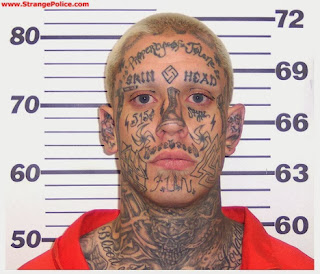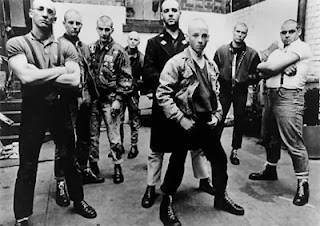How are youth subcultures defined?
Youth subcultures are groups within young people, who may be defined by their clothes, work, home, school, family or friends. According to Jordaan in Man in Context (1984), "a subculture group is a social-cultural formation that exists as a sort of island or enclave within the larger society.” Sociologists believe that society is the one who defines the groups, instead of the groups themselves.
When and why do they emerge?
Many historians and sociologists argue about the way in which different sub cultures emerge. The main theory is that when they are forced to enter different social groups for example school, work, and going into a new location. Notice the word ‘forced’ is used meaning these subcultures don’t always desire to be formed.
How are they perceived by society and mass media ?
In 2007 the deaths of three Melbourne teenagers caught the media’s attention. The media exaggerated this issue by involving the EMO sub culture and social networking for the suicide and murders.
Also the language often used in the newspapers (controlled by the media) allows people to paint young people in a different way. This leads to constant stereotypes made by people about these youth subcultures.
How were they perceived by society and by mass media?
In the song ‘London Skinhead Crew’ by Booze and Glory, it mainly highlights how skinheads are perceived in this day in age. Within the chorus, it talks about the personality and characteristics Skinheads have:
Coz we got nothing else to do – this line demonstrates that they might be quite lazy or feel as they do not have a purpose.
London Skinhead Crew – this line shows that they refer to themselves as a crew. Google’s definition of ‘crew’ is ‘a group of people that work closely together’. This shows that the subculture is quite close and operates together also.
Scars, tattoos, crombie coats, full of trouble – this line highlights the physical characteristics of skinheads and how they behave.
We grew up on dead end streets – definition of ‘dead end streets’ – ‘blind alley: a street with only one way in or out’. This shows that they think that once you’re a skinhead, you won’t be able to stop being one because you grew up with only one way to do things.
Lack of teeth - full of dreams – the phrase “lack of teeth” could mean they maybe get into a lot of fights. This means they could be quite violent at times.
Drinking beer and forever blowing bubbles – “drinking beer” shows that they enjoy alcohol but “forever blowing bubbles” contrasts on how skinheads are presented within the chorus
Booze and Glory - London Skinhead Crew Music Video:
Booze and Glory - London Skinhead Crew Music Video:
Does this subculture still exist?
Skinheads do still exist. For example, there are underground neo-nazi skinheads that live in Canada. They are treated very unfairly because of the stereotypes and reputation skinheads have. In this article, you will find much more information of treatment of skinheads in Canada.
http://www.featureshoot.com/2013/02/underground-neo-nazi-skinheads-in-canada-photographed-by-brett-gundlock/
When, where and in which social, political and economic contexts did it start?
If you were a skinhead, you were a member of a subculture that originated, among the working class youths of London in the 1960s.When most people think of skinheads, the first thing that comes to mind is often a racist Nazi white male with tattoos all over their body and a generally threatening manner. They might even think of someone like this being involved with the KKK. However originally these was not their intention...
Lots of the young people, in the 1960s spent their money on high end fashion trends that came from American and R&B groups, British rock bands, and even movie stars. These young people became known as mods, who would be known for their consumerism, devotion to fashion, music, and scooters, which were a major staple in this subculture. ( A subculture is a social group within a national culture that has a distinctive patterns of behaviour and beliefs)
However not everyone in this time could afford to keep up with these trends. The 'Peacock mods' were the people that always had the latest fashion trends, money and was known to be the least voilent. While the 'hard mods' was more working class: with less money.
As a matter of fact it started as a reaction against the hippie movement, not race or politics. The first representatives of the movement were greatly influenced by black music imported by immigrants from former Caribbean colonies, Jamaican rude boys and British mods. But by the early 1980s skin heads started to identify them selves with racist/ facist ideas - influenced by the British National Front ( BNF). These views then spread to other parts of the world especially America. Skinheads Against Racial Prejudice (SHARP), were different type of skinheads and would often fight with racist skinheads. Apart from the different views on politics both groups of skinheads listen to the same music and followed the same fashion trends.
Did they have a distinctive style?
Hard mods, with the little money they had wore: boots, button down shirts, straight legged jeans and suspenders. If they happened to have money they would wear tonic suits and other classy outfits that they could wear to dance halls where they would enjoy Ska music, rocksteady, and reggae genres. Skinheads often had closely shaven heads (mostly for workforce reasons), which is where the term skinhead came from. By the late 1960s, it was what they were commonly known as.
We found this documentary about skinheads. It demonstrates how the mass media effects youth subcultures and helps us understand the history of skinheads:
Lots of the young people, in the 1960s spent their money on high end fashion trends that came from American and R&B groups, British rock bands, and even movie stars. These young people became known as mods, who would be known for their consumerism, devotion to fashion, music, and scooters, which were a major staple in this subculture. ( A subculture is a social group within a national culture that has a distinctive patterns of behaviour and beliefs)
However not everyone in this time could afford to keep up with these trends. The 'Peacock mods' were the people that always had the latest fashion trends, money and was known to be the least voilent. While the 'hard mods' was more working class: with less money.
As a matter of fact it started as a reaction against the hippie movement, not race or politics. The first representatives of the movement were greatly influenced by black music imported by immigrants from former Caribbean colonies, Jamaican rude boys and British mods. But by the early 1980s skin heads started to identify them selves with racist/ facist ideas - influenced by the British National Front ( BNF). These views then spread to other parts of the world especially America. Skinheads Against Racial Prejudice (SHARP), were different type of skinheads and would often fight with racist skinheads. Apart from the different views on politics both groups of skinheads listen to the same music and followed the same fashion trends.
Did they have a distinctive style?
Hard mods, with the little money they had wore: boots, button down shirts, straight legged jeans and suspenders. If they happened to have money they would wear tonic suits and other classy outfits that they could wear to dance halls where they would enjoy Ska music, rocksteady, and reggae genres. Skinheads often had closely shaven heads (mostly for workforce reasons), which is where the term skinhead came from. By the late 1960s, it was what they were commonly known as.
We found this documentary about skinheads. It demonstrates how the mass media effects youth subcultures and helps us understand the history of skinheads:
4) Skinheads define themselves as superior and respected in the way that they can hate what they want and discriminate what they want without consequences. They also seem themselves as the bullies and that they can bully and hate any race they want. They began their idea of being racist in Scotland and Northern England.
5) The role of young men and women are that they need to show their differences between themselves and who they classify the` disrespectful one`. The role of young men that were skinheads was leaders and intimidating. Whilst the female skinheads look like the servants that would cut their hair and buy there drinks and cigarettes.
6) Youth culture changed over the years because different skinheads joined together and formed different rules and opinions. There are quite a lot different groups of skinheads that had mixed together to form different parades. Some non-racist groups became racist because they were mixed with racist groups.




.JPG)

